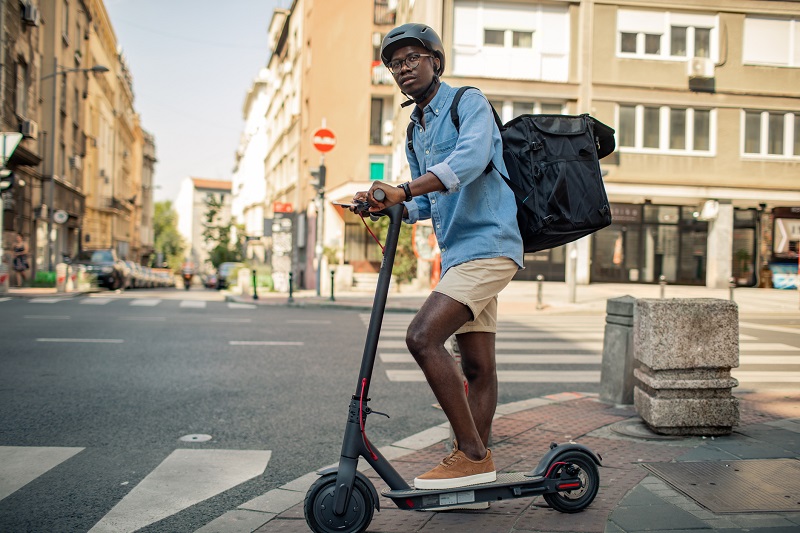Fall risks associated with e-scooters

Editor’s note: This is the first of a two-part series on the biomechanics of rider falls from e-scooters. Part 2 will appear next week.
Canada’s capital is in the midst of its fourth electric scooter (or e-scooter) pilot program. These electrified versions of children’s kick scooters have become increasingly popular with adults as a fun and convenient means of transportation.
Users in Ottawa must cope with various restrictions aimed at making e-scooters safer, according to a recent CTV report. E-scooters in Canada’s capital must emit a continuous sound so that people can hear them coming. Plus, the scooters aren’t allowed on sidewalks and may only be used on roads with a posted speed limit of 50 kilometres per hour or less.
E-scooter riders, along with cyclists and pedestrians, are vulnerable road users when compared to other motor vehicle drivers. And research shows the most common cause of injuries to e-scooter riders is not from contact with vehicles, but from falls.
A study of 105 adults hurt while riding e-scooters in Washington, D.C., found approximately 67% of incidents were the result of falls due to bad roads or rough travelling surfaces. Only 10% of incidents were due to collisions with motorized vehicles.
Similar findings were seen in Copenhagen, Denmark, where falls accounted for almost 90% of e-scooter rider injuries.
The most common injuries suffered by e-scooter riders who reported falls in these studies were to the head and face. Less than 4% of riders reported wearing helmets at the time they fell. As with cyclists and pedestrians, head-to-ground impacts are an important determinant of severe head injuries with e-scooter riders.
A recent academic study made computational predictions of head-to-ground impact kinematics in e-scooter falls.
To simulate falls, the authors incorporated potholes of varying widths (20, 40, 60 and 80 centimetres) and depths (3, 6 and 9 centimetres) in the path of the scooter. This allowed them to explore the effects on the head-to-ground impact force and velocity for a wide range of rider sizes and weights at various speeds (10, 15, 20, 25 and 30 kilometres per hour).
The computer-based predictions were validated by comparison to tests carried out by the Swifty scooter company. That test involved a volunteer riding an e-scooter at approximately 10 kilometres per hour and falling to the ground after entering a pothole 80 centimetres wide and 7.2 centimetres deep.
The scooter fall could be divided into two phases: the contact phase, in which the e-scooter encounters the pothole’s second edge, and the discharge phase, in which the rider falls from the e-scooter and becomes airborne before hitting the ground.
The study authors observed three different types of fall kinematics, which depended on the pothole depth, width, and e-scooter speed.
The first type, pothole depth, accounted for 66% of falls. The rider was discharged forward from the e-scooter, with another body part contacting the ground before their head contacted the ground.
The second type, pothole width, accounted for 28% of falls. The rider was discharged from the e-scooter, with the head contacting the ground first.
And in the third type, speed, accounted for 6% of falls. The rider was discharged from the e-scooter, with their body rotating to the side before impacting the ground on the side, followed by head-to-ground impact.
The study noted the third fall type changed based the pothole depth. All falls were Type 2 when the e-scooter speed was 30 kilometres per hour.
The study also noted none of the riders fell when the pothole’s depth was 3 centimetres (12% of the e-scooter wheel’s diameter). And it found potholes deeper than six centimetres significantly increased the risk of falls.
Brittany Sinclair, B.Sc., P.Eng. is an associate in the Biomechanics & Personal Injury Group at 30 Forensic Engineering.
Feature image courtesy of iStock.com/vgajic







